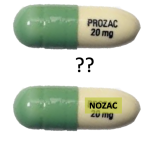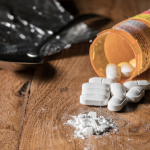An important study examining whether antidepressants were useful for pain was recently published in BMJ. The headlines stated varieties of the same theme: They "may not be effective" or "may have a small benefit." These conclusions are based on data from one table in the paper. Let's take a look at that data.
painkillers
For some, opioids aren't just painkillers; they serve as a lure into an addictive, self-destructive lifestyle. The sense of euphoria that opioids can cause proves irresistible to some addicts. For this reason, pharmaceutical companies are seeking to discover and develop non-opioid, non-addictive drugs to treat pain.
Ever since the Vioxx withdrawal in 2004, studies have linked nonsteroidal anti-inflammatory drugs (NSAIDs) to elevated risk of cardiovascular events (CVD). A boxed warning by the FDA on these common painkillers is now going to be augmented with stronger warnings.
Dr. Josh Bloom on Science 2.0, March 3, 2015
I never know what I'm going to find on the editorial pages of the New York Times. Sometimes I agree with them, and sometimes I don't. But, they usually, at the very least, make sense.
It is no secret that narcotic abuse mostly oxycodone and hydrocodone (the ingredients in Percocet and Vicodin, respectively) is a serious and growing problem in the US. So, leave it to our government the DEA in particular to screw it up more. Except, this time, their actions are certainly going to hurt patients with legitimate needs, and probably do little or nothing to combat the abuse problems. It may even make the problem worse.
According to a new CDC report, fatalities from overdosing on painkillers are on the rise among women. Compared to 1999, this rate is now five times higher. (It s also three times higher in men). That amounts to about 18 women per day, and most of those deaths are from prescription painkillers such as Vicodin, OxyContin, Percocet, and methadone.

